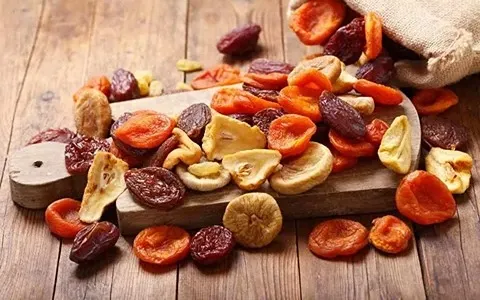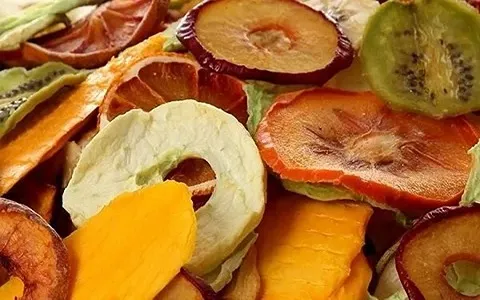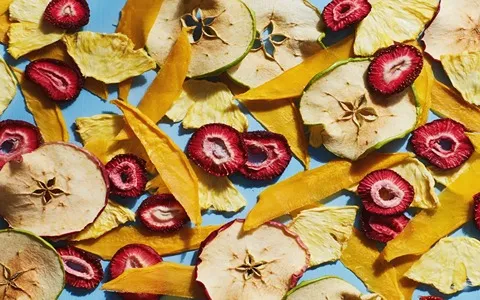In recent years, dried fruit has gained popularity as a tasty and convenient snack option whether enjoyed on its own or added to recipes, dried fruit is a versatile and nutritious choice for those looking to satisfy their sweet cravings while also reaping the health benefits that come with it.

The Ingredients in Dried Fruit and How to Buy
In this comprehensive guide, we will explore the ingredients in dried fruit, the benefits it offers, and provide tips on how to buy the best quality products.
Dried fruit is essentially fruit that has had the majority of its water content removed through dehydration processes such as sun drying, air drying, or artificial dehydration methods.
The result is a concentrated, sweet, and chewy snack that retains many of the nutrients found in fresh fruit the main ingredients in dried fruit are, of course, the fruit itself, but some varieties may also contain added sugars or preservatives.

Ingredients in Dried Fruit
1. Fruit The primary ingredient in dried fruit is, of course, the fruit itself common fruits that are dried include raisins, apricots, dates, figs, cranberries, and prunes.
Each type of fruit offers a unique flavor profile and nutrient content, making dried fruit a diverse snacking option.
2. Added sugars Some dried fruit products may contain added sugars to enhance sweetness and prolong shelf life.
While natural sugars are present in fruit, additional sugars can significantly increase the calorie content of dried fruit it is essential to read labels carefully and choose products with little to no added sugars if possible.
3. Preservatives Certain varieties of dried fruit are treated with preservatives such as sulfur dioxide to prevent discoloration and spoilage.
While preservatives can extend the shelf life of dried fruit, some individuals may be sensitive or allergic to these additives opting for unsulfurized dried fruit or those preserved with natural alternatives is a healthier choice.

Benefits of Dried Fruit
Dried fruit is not only a tasty snack but also a nutritional powerhouse packed with essential vitamins, minerals, and fiber.
Here are some of the key benefits of incorporating dried fruit into your diet.
1. Rich in nutrients Dried fruit retains many of the nutrients found in fresh fruit, including vitamins A and C, potassium, fiber, and antioxidants.
These nutrients play a vital role in supporting overall health and well-being.
2. Fiber-rich Dried fruit is an excellent source of dietary fiber, which promotes digestive health, helps regulate blood sugar levels, and contributes to a feeling of fullness.
Including dried fruit in your diet can help you meet your daily fiber needs and support a healthy gut.
3. Convenient and portable Dried fruit is a convenient and portable snack option that requires no refrigeration and can be easily taken on the go.
Whether you're traveling, hiking, or simply need a quick energy boost, dried fruit is a convenient choice.
4. Natural sweetness The natural sugars present in dried fruit provide a sweet and satisfying flavor without the need for added sugars or artificial sweeteners.
This makes dried fruit a healthier alternative to traditional sweet treats.
5. Long shelf life Dried fruit has a long shelf life compared to fresh fruit, making it a practical option for stocking up on wholesome snacks that won't spoil quickly.
Properly stored, dried fruit can last for several months, allowing you to enjoy it whenever cravings strike.

How to Buy Dried Fruit
When shopping for dried fruit, it's essential to choose high-quality products that are free of additives and preservatives.
Here are some tips for buying the best dried fruit
1. Read the ingredients list Always check the ingredients list on the packaging to ensure that the dried fruit contains only the fruit itself, without added sugars, preservatives, or artificial ingredients.
Look for products labeled as 'unsweetened' or 'no added sugars' for a healthier option.
2. Inspect the appearance Quality dried fruit should have a vibrant color and plump texture.
Avoid products that appear dull, shriveled, or discolored, as these may indicate poor quality or spoilage look for fruits that look fresh and appetizing.
3. Choose organic Whenever possible, opt for organic dried fruit to reduce exposure to pesticides and chemical residues.
Organic fruits are grown without synthetic pesticides or fertilizers, making them a cleaner and more environmentally friendly choice.
4. Check for sulfites If you have sensitivities or allergies to sulfur dioxide and other sulfites commonly used as preservatives in dried fruit, look for products labeled as 'sulfur-free' or 'unsulfured.'
These options are preserved using natural methods, such as fruit juices or oils.

